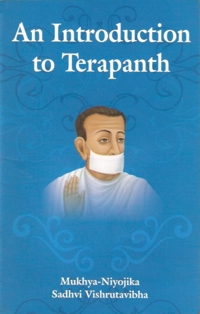One day, thirteen Shravakas (lay followers) were performing samayika in a spacious shop in the middle of the market at Jodhpur. Fatechandji, the Divan (the chief minister of Jodhpur-state), passing by the market, saw this strange scene - people performing religious rites in a shop.
Greatly surprised, he asked the lay followers, “Why are you performing your samayika here in a shop, instead of a sthanaka?” The Shravakas narrated the whole event of how Muni Bhikanji had separated from Acharya Raghunathji and explained the causes of the difference in ideology between Muni Bhikanji and his guru. Having heard the explanation and the causes of events, the Divan appreciated Bhikanji’s stand. He asked, “How many followers of his new path are there? They replied, “Sir! We are thirteen in number.” The Divan further inquired about the number of monks supporting Bhikanji. The followers replied, “Monks are also thirteen in number.” The Divan said, “It is a wonderful coincidence that the number of both the monk and the lay followers is thirteen.”
At that time, a poet, belonging to the sevaka caste, was standing nearby. He instantly composed a verse:
Sadha sadha ro gilo karai, te to apa aparo manta,
Sunajyo re sahar ra loka, ai terapanthi tanta.
In this way, the new group became popular as “Terapantha” literally meaning --- a sect of thirteen monks. When Acharya Bhikshu came to know about this couplet, he interpreted it in a different way. At once, he descended from his seat, sat down in the posture of obeisance, and paying his obeisance to Lord Mahavira, he proclaimed with joy. “O Lord! It is thy (tera) path (panth). I am only a follower of it. Thus Acharya Bhikshu interpreted the Terapantha to mean “the Lord’s path” and also bestowed it with deeper religious significance: (In vernacular language, “tera” stands for “your” as well as “thirteen”). “Tera” also means thirteen fundamental rules for the Jain ascetics, viz., five Mahavratas, five samities and three gupties belong to the order of Terapantha.
 Sadhvi Vishrut Vibha
Sadhvi Vishrut Vibha

